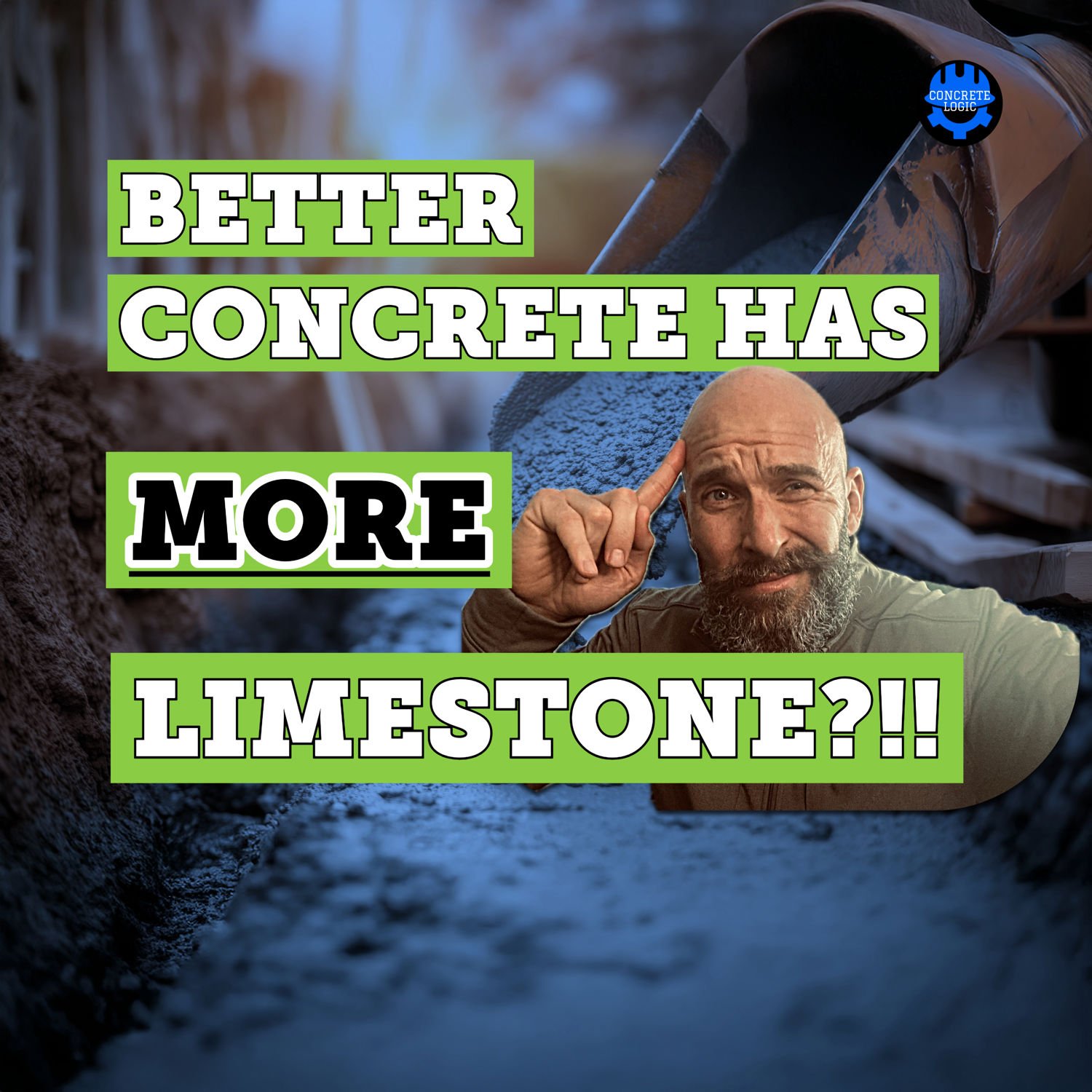Concrete Innovation: Are We Witnessing the Next Big Shift, or Just Another Trend?

The concrete world is buzzing right now. New mix designs, new ways to reduce cement use, and a lot of noise about “green” concrete and low-carbon alternatives. Recently on the Concrete Logic Podcast, I had the chance to sit down with John Guynn from Roman Cement and John Kline from Kline Consulting. We dug into some innovative ideas about reducing cement content without sacrificing performance.
Now, I’m not jumping on the bandwagon just yet. I haven’t used this method myself, and I’m always skeptical of new trends until the dust settles. But here’s the thing—whether or not this new approach actually changes the game in the long run, the innovation happening right now in concrete is exciting.
We’re talking about coarser limestone powder being used as a mineral filler in mixes, which supposedly helps improve the particle packing effect and reduces the need for water. It’s a cheaper alternative, and the early results sound promising—better strength, better workability, and reduced costs.
But here's my question: Will this be the breakthrough the concrete industry has been waiting for, or are we just riding the wave of a short-lived trend that’ll be laughed at in five years?
On top of that, the conversation also touched on two major areas of innovation that are being explored more and more: carbon capture and nanotechnology. Both of these are game-changing, potentially altering the way we think about concrete’s environmental impact and performance. Carbon capture, for example, promises to help us trap some of the carbon emissions from cement production, which is a huge step forward in reducing the industry's carbon footprint. Nanotechnology, on the other hand, is still in its early stages but could drastically improve the durability and performance of concrete without adding a lot of extra cost or complexity.
It’s hard to say where these innovations will take us. Maybe we’ll look back on this period of concrete innovation in a few years and roll our eyes at how hyped up we were about limestone powder as filler. Or maybe we’ll say, “Hey, I was there when things really started to change in concrete history.” Time will tell.
And that’s what’s exciting about being a concrete nerd right now. We’re living in a time of exploration and innovation—where new ideas are being tested, from carbon capture to nanotechnology, and what we’re doing today could reshape the industry tomorrow. Whether it’s using coarser limestone powder, experimenting with new SCMs, or figuring out how these technologies will work at scale, the future of concrete looks a lot more interesting than it did a few years ago.
So, if you’re reading this blog post and listening to the podcast and haven’t donated yet—stop reading this and go donate!
Seriously.
We couldn’t keep this going without your support. If you donate, you'll get the honor of being listed as a producer/supporter of the podcast (fame, glory, all that good stuff). But hey, if you’re not in it for the celebrity status, just let me know when you donate and I’ll make sure your anonymity is protected. No judgment.
And while we’re on the topic of support, don’t forget to check out the Concrete Logic Academy here. If you’re serious about keeping up with the latest in concrete tech and industry trends, this is where the real concrete nerds are hanging out.
Anyway, back to concrete. Whether this new method takes off or not, it’s still a time of real innovation. Concrete’s been the same for so long that anything that shakes things up—even if it’s just a small step—is worth paying attention to. Who knows? In five years, we might look back at this period and realize it was the moment everything started to change for the better.
Or, we might laugh and say, “Remember when they thought limestone powder was the answer?”
Either way, it’s a fun time to be in the concrete game. So stay tuned, and let’s see where this journey takes us.
Until next time, keep it concrete.











